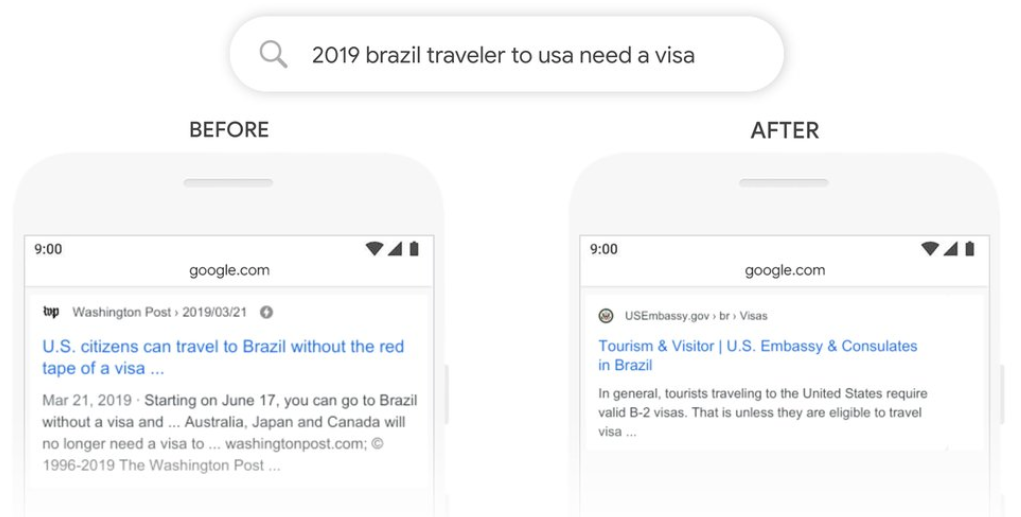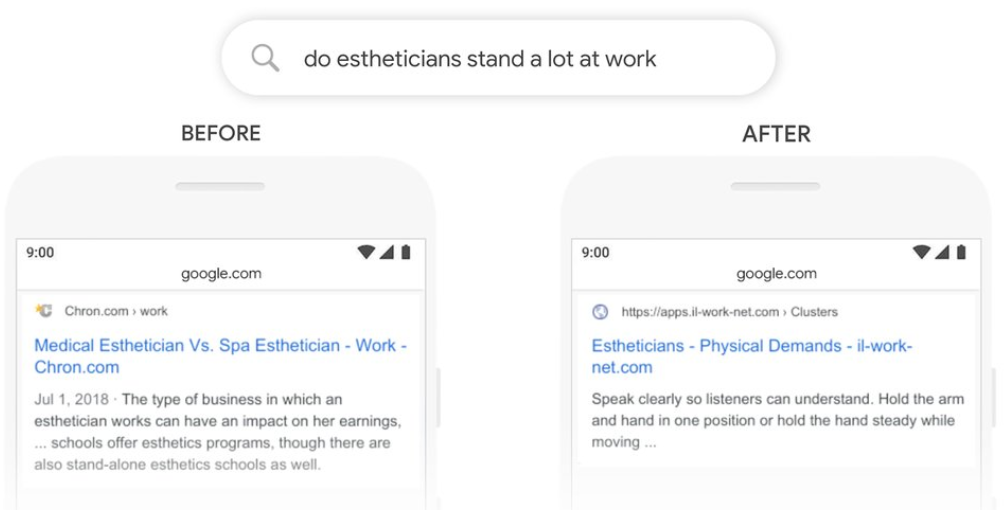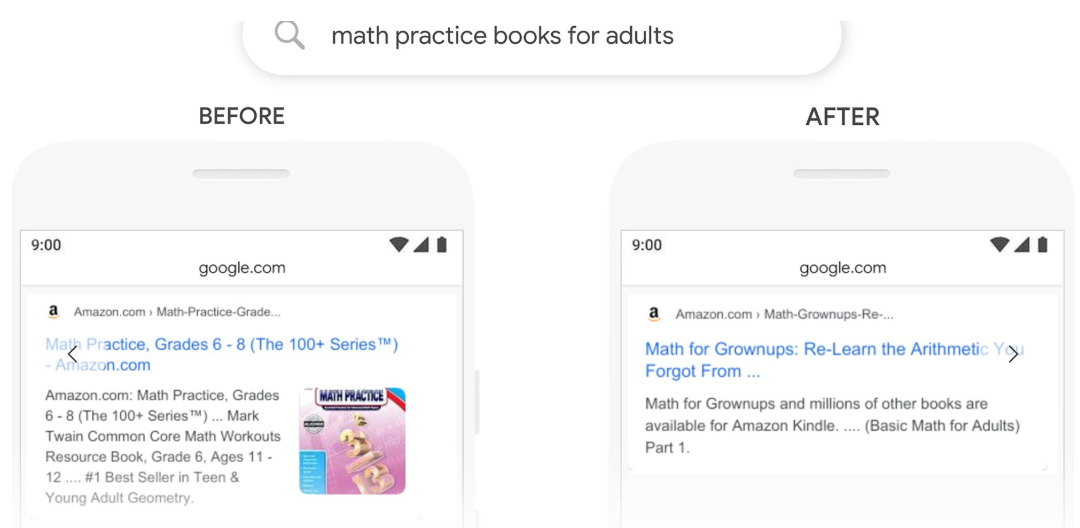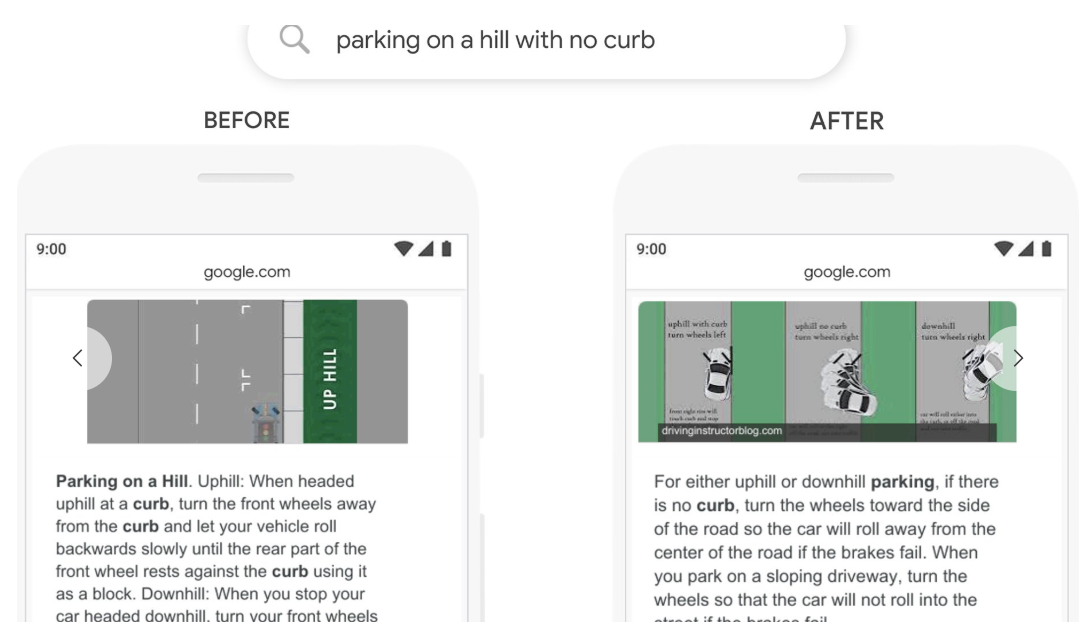Written by Merche Martínez
Index
The week of October 21 Google announced that a new algorithm update called BERT was being released. This update represents one of the biggest advances in the history of search engines and the biggest breakthrough in the last five years.
What is Google BERT?
BERT stands for Bidirectional Encoder Representations from Transformers.
It is a technique based on neural networks for the pre-training of natural language processing (NLP). BERT models can interpret the full context of a word by analyzing the words that come before and after it, which is very useful for understanding the user’s search intent when querying. Currently, search words are processed in a linear fashion, one after the other, focusing on each of the terms without taking into account the context.
Pandu Nayac (Google Fellow and Vice President, Search) says that addressing this change has required scaling up traditional hardware, using the latest TPUs in the cloud to build the BERT models and get the most relevant information as quickly as possible.
Why is Google BERT useful?
15% of daily searches performed on Google are new, there is no prior information on whether the results displayed match the user’s search intent. Sometimes users don’t know exactly what words to use to search for what they are interested in, they are looking to learn and don’t know how to start.
For this reason, BERT tries to understand human language, find out what the user is looking for and show them information that is useful to them. Especially for searches where the prepositions “to”, “of”, “for” or the negation “not” are important for the meaning.
Where will we see its impact?
In search results and featured snippets.
Barry Schwartz stated on October 25 that 10% of English queries in the United States had been affected by this update. It will eventually be extended to more languages and countries, although it is not yet confirmed when it might arrive in Spain.
Regarding the highlighted fragments, Pandu Nayac says that a BERT model is already being used to improve them in 24 countries. Significant improvements are being seen in Korean, Hindi and Portuguese.
Examples of search results with Google BERT
To better understand the actual implementation of this update, Google provides examples of search results for certain queries before and after the implementation of Google BERT.
Search “2019 Brazil traveler to usa need a visa”.The story is about a Brazilian who travels to the United States. Previously, Google was not able to understand the importance of the preposition “to” and displayed results about U.S. citizens traveling to Brazil. BERT does provide relevant search results.
For the search “do estheticians stand a lot at work”, until now the keyword or match system showed results with the term “stand-alone” for searches with the term “stand”, although this is not the correct meaning of the term according to the context of this query. Google BERT understands that “stand” is related to the demand for a job.
The search “can you get medicine for someone pharmacy” with BERT understands the importance of “for someone” and shows relevant results.
Another example is the search for “math practice book for adults”. Previously, an Amazon page to buy a math book in the “young adult” category was returned as the optimal result. BERT can understand the context of the term “adult” and return a more useful result to the user.
Example of a featured snippet with Google BERT
For the search “parking on a hill with no curb” until now “curb” was taken as the relevant term and the word “no” was ignored. Google BERT focuses on context and displays useful results for this search.
What can we do to optimize our site for Google BERT?
We can’t really do anything new, just keep writing our website content for our users. It is Google’s researchers who are doing the hard work to make the machines increasingly understand human language in order to return the most relevant result for each and every search.
Where do the keywords fit in?
For some time now we have seen that for a specific keyword, pages were being positioned that did not even include it in the content of the page or in prominent areas such as the title or metadescription. This does not mean that we no longer take into account the keywords that users use in searches, but that we must emphasize that our landing page is useful for the context of those searches.
References:








